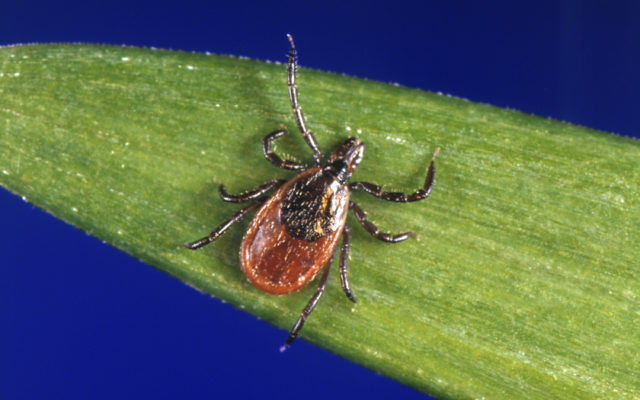
UMaine seeks to thwart ticks by helping landowners weed out invasive forest plants
ORONO — Ask anyone who frequents the forests of New England and they will likely speak of unwelcome companions — ticks.
Blacklegged ticks are expanding their range and rising in numbers, infecting people with pathogens that cause conditions like Lyme disease and babesiosis. Climate change is frequently blamed, but researchers have noticed another man-made problem may be helping the pests spread. Invasive forest plants like buckthorn, honeysuckles and Japanese barberry create dense, damp thickets where surveys show ticks love to lurk.
With a new opportunity to turn the tide on ticks in sight, three University of Maine researchers secured a $1.8 million grant from the National Science Foundation to test if controlling unwelcome forest plants also reduces densities of ticks, and how landowners can best apply and share that information. Graduate and undergraduate student researchers will be recruited to support the project.
Landowners — whether suburban homeowners or small woodland owners — make choices about how to manage invasive plants and ticks, but typically address them separately. Forest ecosystems are complex and continually change, making the best strategies for managing these challenges feel elusive. To help landowners, the project will develop actionable recommendations on forest management as well as best practices for sharing that information, and establish a network for spreading these ideas.
“This research uses the connection between human health and our environment to combat multiple issues simultaneously,” said Allison Gardner, an associate professor and medical entomologist at UMaine who is one of the project’s principal investigators. “By developing actionable strategies to help landowners target invasive plants, we can also reduce habitats where ticks thrive and tick-borne diseases spread — a win-win for people and the environment.”
The project unites Gardner’s entomology expertise with social, behavioral and environmental scientists, enabling them to seamlessly translate field research into change in the forest. Other principal investigators include UMaine professors Jessica Leahy, a human dimensions of natural resources scholar and forester, and Timothy Waring, an evolutionary and behavioral scientist; as well as William Landesman, an associate professor who studies microbiology and tick-borne pathogens, and Kristen Ross, a plant and restoration ecologist and assistant professor; both of Vermont State University.
“One problem is that it’s hard, even for scientists, to figure out the best approach. So there’s no guarantee that landowners are going to learn effective solutions either. We will study how landowners learn forest management practices from one another with an eye to finding and spreading these win-win approaches,” said Waring.
The five-year study will survey tick densities and test management techniques in Maine and Vermont. Researchers will also explore how landowners manage their woods for both ticks and invasive plants, and how they learn — or fail to learn — best practices from each other. They will then take what they learned and teach landowners grappling with the unwelcome duo best practices for simultaneously managing invasive plants and ticks. The project will foster further dissemination of this research by establishing a peer-to-peer outreach program called Forest Landowner Education & Research Network. Forest LEARN will equip landowners as ambassadors for science so they can share best practices for invasive plant and tick management with their neighbors and communities.
Private and public land managers who wish to contribute to the tick-forest research or join the LEARN network should email jessica.leahy@maine.edu. The Forest LEARN program will provide tailored training and resources to empower landowners to manage their woodlands more effectively and share strategies with their peers.
“This is more than a research project — it’s a community effort to create healthier landscapes and protect Maine’s residents,” said Leahy. “By collaborating with landowners and developing peer networks, we’re building the capacity for Maine to thrive in the face of emerging challenges.”